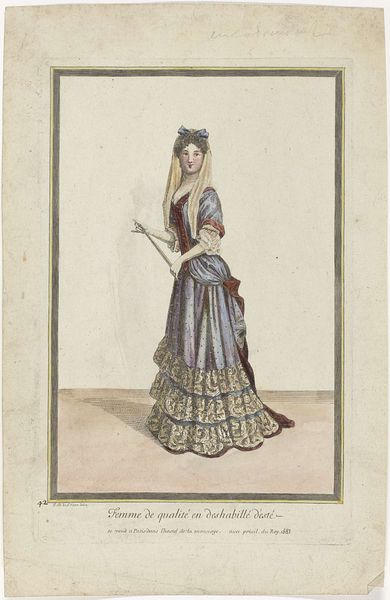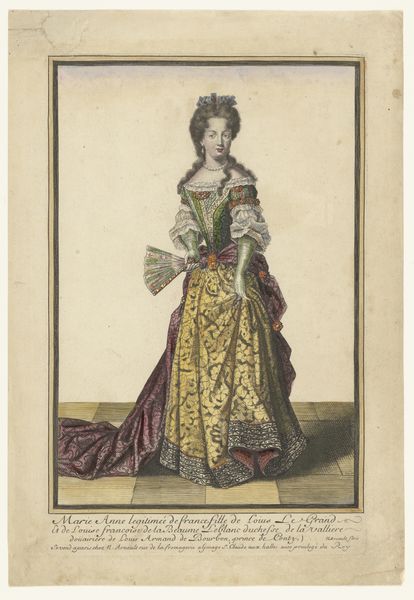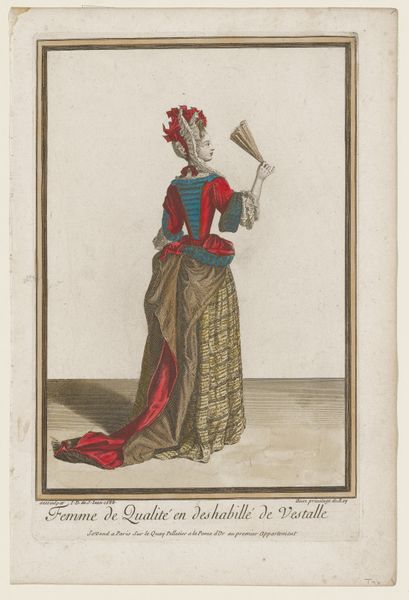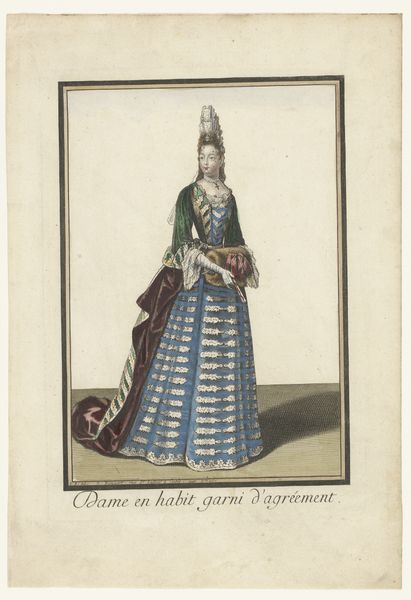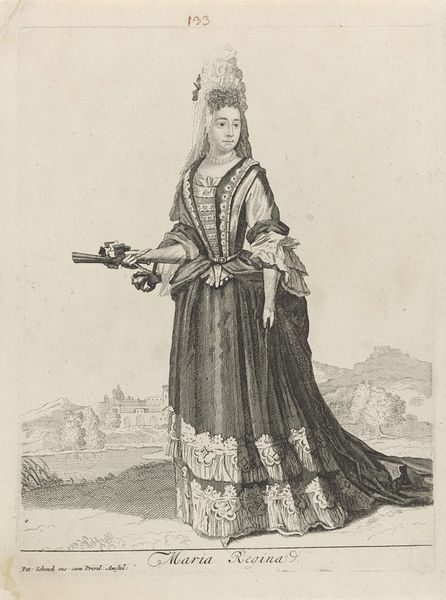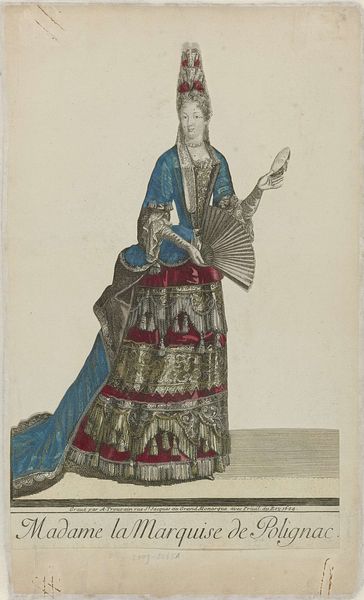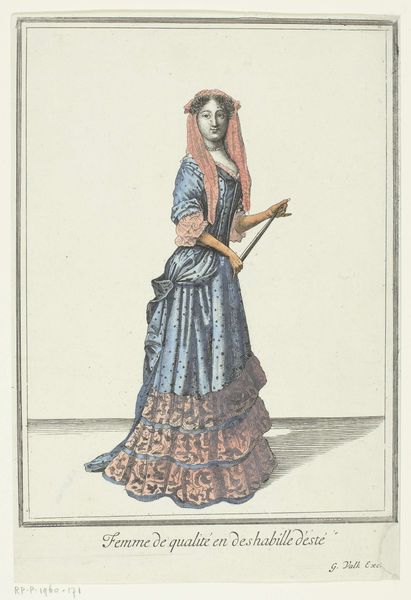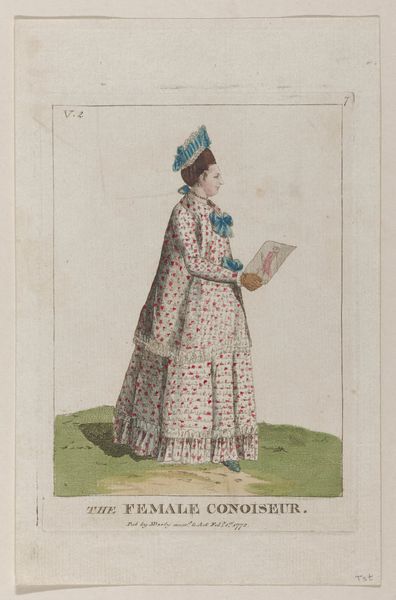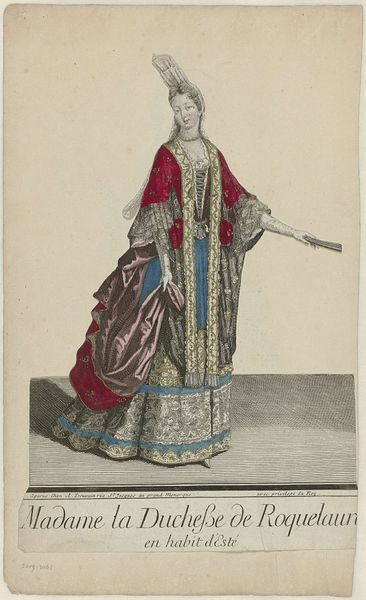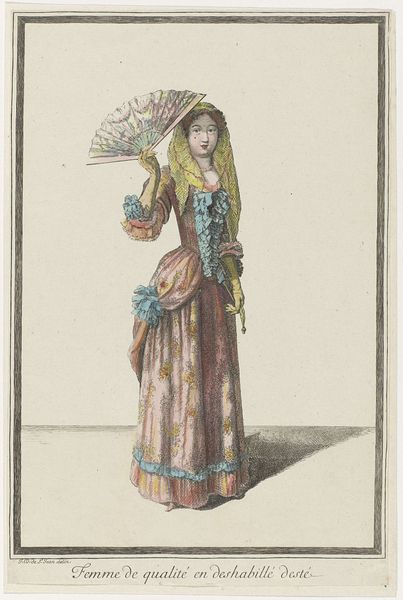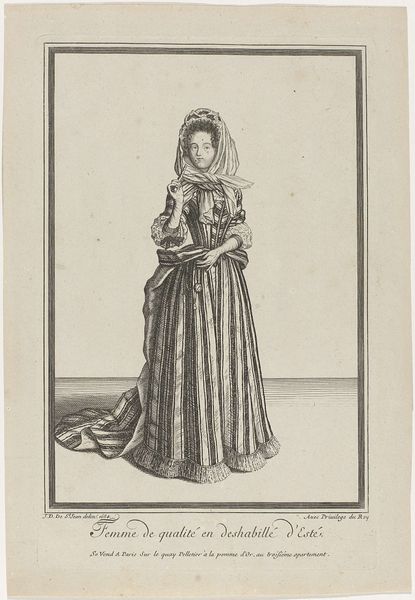
drawing, coloured-pencil
#
portrait
#
drawing
#
coloured-pencil
#
baroque
#
caricature
#
figuration
#
coloured pencil
#
watercolor
Dimensions: height 300 mm, width 200 mm
Copyright: Rijks Museum: Open Domain
Curator: Standing before us is "Dame met fontangekapsel, waaier in de linkerhand", a drawing created between 1685 and 1690 by Robert Bonnart. It resides here in the Rijksmuseum. It's rendered in colored pencil, showcasing a woman of the late Baroque era. What catches your eye immediately, I wonder? Editor: That *hair*. Good heavens, it’s like a frosted skyscraper teetering atop her head! I'm simultaneously in awe and wondering how she navigates doorways. The whole composition feels, well, intentionally performative. Like she knows she's being looked at. Curator: Precisely. The "fontange" hairstyle was a significant fashion statement, indicative of status and adherence to courtly style, popularized, famously, by Louis XIV’s mistress, the Duchesse de Fontange. Bonnart was, in his time, producing and circulating images catering to exactly this cultural moment of conspicuous consumption. Editor: Conspicuous is the word! The details are fascinating. Notice the crisp edges defining every fold of fabric, almost as if sculpted. Yet the expression on her face seems…resigned, perhaps? A hint of melancholic awareness behind all that artifice? Or maybe I’m projecting. Curator: It is a relatively static pose, a deliberate choice. Consider how portraiture functioned within 17th-century French society. These weren't just pictures, they were political tools, communicating wealth, power, and social standing. Think of them as early forms of public relations. Editor: Hmmm. So this elaborate presentation of self, every detail meticulously crafted…it’s all a language, saying, “I belong. I am of value.” I get it. Still, I wonder about the real person hidden somewhere beneath those layers of lace and social expectation. The artist, consciously or unconsciously, gave her interiority in that gaze. Curator: It's that tension, isn't it, between the constructed image and the potential for individual expression, that makes the portrait so compelling. Bonnart understood this dynamic well. Editor: Absolutely. For me, the lasting power here isn’t the history lesson but the quiet whisper of humanity within this incredibly stylized portrayal. A gorgeous visual artifact – but with a real heartbeat. Curator: And I think framing her in history provides another valuable window onto how those tensions have played out in social codes. It's rewarding to hear how these intersect for each viewer.
Comments
No comments
Be the first to comment and join the conversation on the ultimate creative platform.

